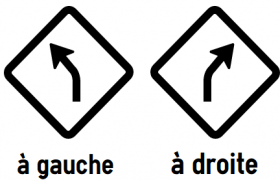Asking for directions in French
Sign up for free to get all information about private lessons and our available group courses (A1, A2, B2, B2, C1, C2)
Sign up for freeSign up for free to get all information about private lessons and our available group courses (A1, A2, B2, B2, C1, C2)
Sign up for freeWhen it comes to learning a language, knowing how to ask for directions or places is a 'must' whether you are a tourist or not. This chapter contains basic phrases that you will find useful in everyday conversations in French.
When travelling to any French speaking country, you will need to know how to ask for or receive directions to the place you are going. Learning how to navigate gives you freedom to explore. Check the vocabulary in the table below:
English | French |
|---|---|
| north | nord |
| south | sud |
| west | ouest |
| east | est |
| straight | tout droit |
| right | droite |
| left | gauche |
| at the corner of | au coin de |
| center | centre |
| in back of | derrière |
| in front of | devant |
| over there | là-bas |
| next to | à côté de |
| city center | le centre-ville |
| map | une carte |
| until | jusqu'à |
When asking a questions, you need to know how to say Where is...? = Où est...?, Is it...? = Est-ce que..?, How can I...? = Comment est-ce que...?, In which..? = Dans quel(le)...? followed by these verbs: aller, se trouver, prendre, suivre, tourner, traverser.
Examples:
Where does the road lead? = Où mène cette rue?
What street is the movie theater on? = Dans quelle rue se trouve le cinéma?
How do I get to the museum? = Comment est-ce que je vais au musée?
Take online language lessons with a professional teacher
In the case of giving an answer or telling what direction to take we use the preposition "à" followed by definite article if it's necessary. To say the place is within eyesight, you can use phrases such as; Le voici! (Here it is!) or La voilà! (There it is!). Regarding the verbs "habiter" is used for living in a space, while "vivre" refers to both time and space. In the table you will find the common verb phrases to answer a question: 
English | French |
|---|---|
| follow the signs for | suivez la direction |
| continue straight ahead | continuez tout droit |
| leave the motorway | quittez l'autoroute |
| stay in the right-hand lane | rester sur votre droite |
Examples:
Pierre is going to the museum. = Pierre va au musée. (à + le / au)
Sarah wants to go to the cathedral. = Sarah veut aller à la cathédrale.
I live in an apartement. = J'habite dans un appartement.
![]() Attention!
Attention!
Pay attention to a formal and informal speech (vous or tu = You).
You can combine already mentioned direction-verbs with the places listed bellow:
| English | French |
|---|---|
| the train station | la gare ferroviaire |
| the bus stop | l'arrêt de bus |
| the airport | l'aéroport |
| the town hall | la mairie |
| the museum | le musée |
| the restaurant | le restaurant |
| the bar | le bar |
| the city center | le centre-ville |
| the shopping center | le centre commercial |
| the historic center | le centre historique |
| the park | le parc |
| the hospital | l'hôpital |
| the police station | le commissariat de police |
| the monument | le monument |
| the bridge | le pont |
French
Marc: Excusez-moi, savez-vous où se trouve Le pont Neuf?
Julien: Oui, vouz devez aller tout droit jusqu'au Pont des fleurs, ensuite tournez à gauche dans la rue Paris IV.
Marc: Comment aller au pont des Fleurs?
Julien: Il se trouve à côté de la Cathédrale Notre-Dame. La première rue à droite.
Marc: Merci beaucoup pour votre aide!
Julien: De rien, au revoir!
English
Marc: Excuse me, do you know where is the Pont Neuf?
Julien: Yes, you have to go straight up to the Bridge of flowers, then turn left in the street Paris IV.
Marc: How to get to the Pont des Fleurs?
Julien: It is next to the Notre-Dame Cathedral. The first street on the right.
Marc: Thank you very much for your help!
Julien: You're welcome, goodbye!
![]() Practice what you have learnt with a few exercises that we have prepared for you!
Practice what you have learnt with a few exercises that we have prepared for you!